You’ve probably heard that in 2050 there will be more plastic in the oceans than fish.

If this is not scary enough, I don’t know what is (well, climate change, but those go hand in hand).
Producing plastic involves fossil fuels and leaves a giant carbon footprint. Plastic bottles followed by food wrappers, and cigarette butts are the top contributors to freshwater plastic pollution.
The Great Pacific Ocean Garbage Patch which is three times larger than France.
Why is plastic pollution a problem?
The thing about plastic is that only as little as 10–15% of it is being recycled globally right now. Single use plastic bottles can be recycled only once and some of them (non-transparent ones) are difficult, if not impossible, to reuse.
Also, it takes them 450 years to decompose.
As a result of not being recycled, plastic finds its way to landfills where it lives forever and to our rivers and oceans (8 million pieces every single day) where it poses a real threat to various marine life species, killing more than 1 million of them every year.
Here is a shocking video of birds found on the Lord Howe Island near Australia. Cause of their death? They were filled with plastic which perforated their gut.
And it’s not only plastic litter and marine debris that ends up in our oceans. Microplastics washed out from clothes made of synthetic fabrics such as viscose are consumed by fish and make their way back to our food chain. Result: we eat plastic. In fact, each of us eats 70,000 microplastics every year - an equivalent of one plastic credit card per week! The potential risk on our health hasn’t been fully identified yet, but it doesn’t mean it’s not there.
If you’re even as half preoccupied by this as I am, read on.
So, what can you do to help prevent this?
Recycle? No question about it! But most importantly — REDUCE plastic.
Wanting to educate myself on ways to reduce plastic, I joined the #plasticfreejuly. challenge. Day by day I faced new challenges and discovered yet another area of my life which needed a mindset change.
But, let me start from the beginning.
What is #plasticfreejuly?
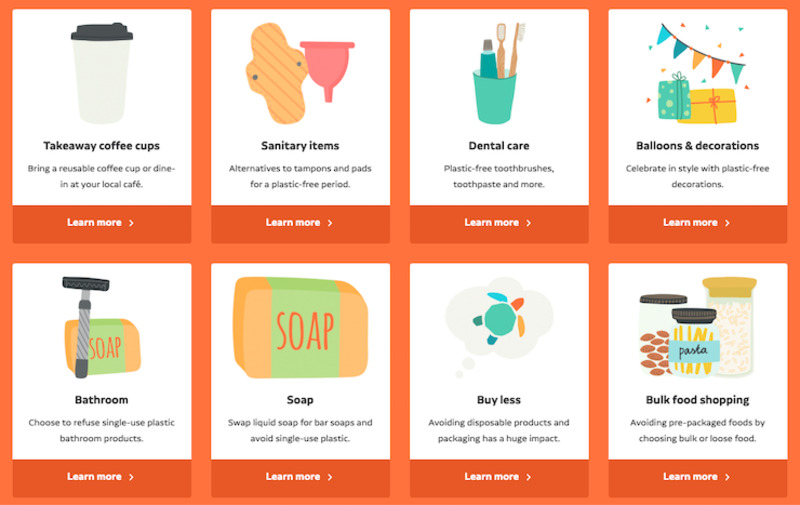
#PlasticFreeJuly is a movement born to help millions of people around the world reduce plastic waste. Throughout the entire month of July, they provide resources and tips to limit plastic in all areas of our lives. The challenge to refuse single-use plastics in July has inspired over 120 million people in 177 countries.
It’s a month of discovery and the beginning of some necessary habit changing.
Am I making a difference?
When you start reducing plastic, you start questioning choices of your everyday life and sometimes it may all seem too daunting or too small to matter. Questions such as: “Am I really making a difference?” can take you down a dangerous spiral of thoughts which may result in inertia: doing nothing.
Knowing that some of the biggest plastic polluting countries are China, US, Germany, Brasil, and that The East Asia and Pacific region dominates global mismanaged plastic waste (60%), I repeatedly asked myself: does it make a difference to drive change outside of those countries?
Does it make a difference to act single-handedly when this is a serious global challenge which needs to be addressed by country leaders and result in new policies?
I still think it does. Here’s why.
Changing even one habit already makes a difference and minimizes demand for certain products. Asking challenging questions to brands (often located in the polluting countries) and talking about this topic sparks conversation and awareness amongst people worldwide. It makes companies more transparent about their processes and supply chains as well as creates demand for new, eco-conscious and sustainable businesses forcing traditional brands to adapt.
Change takes time
Going plastic-free requires a big re-adjustment and it is something you cannot expect to change in a week or even a month. It’s a process of self-education, learning, and exploration. So, if you want to start reducing plastic, I think it’s best to keep your expectations in check and know IT IS OK to do it step by step, not all at once.
Top challenges when going plastic-free
One of my takeaways from #plasticfreejuly challenge is that the switch is possible, but is definitely not easy. It requires extra planning, guts to refuse, asking many questions, and most importantly, new habit forming.
This is not to discourage anyone, but rather help you go into it with the right mindset and ready to face some roadblocks ahead.
1. Extra time, dedication, and preparation.
Since reducing plastic involves habit changing, a lot of time needs to be invested in finding new brands for everything, localizing zero waste shops, or making your own products. (I’m definitely not there yet!). And in extreme cases, it means letting go of your favorite brands or food types, simply because they always come in plastic.
It also means extra planning whenever going grocery shopping, ordering food to take away, going to the beach, or traveling. Spontaneous trips to the shop around the corner will most likely result in unwanted plastic. So will going out without your water bottle.
Lessons learned:
Once you get organized and know where to get all you need, it becomes part of your daily routine and is much more manageable than at the beginning.
2. Having the guts to refuse.
How comfortable are you to explain to the lady behind the counter (in a foreign language) that "no, you don’t need it wrapped in plastic", while there are several people in line waiting impatiently?
Sometimes I do it, other times, I simply give up.
Often you need to anticipate that your drink in a restaurant will come with a straw (or two! why??) or that your water will be served in a plastic bottle. And you need to have guts and patience to refuse them upfront. I’m lactose intolerant, so combined with all my questions about dairy in the menu, I become the most annoying customer of all times.
Last but not least, since this is a lifestyle change, you probably should tell your family and friends about it if you want to stop receiving gifts that involve plastic or take part in activities where excessive plastic consumption is involved.
Lessons learned:
My recommendation is to always be patient and explain with a smile: I'm trying to avoid single-use plastic as much as possible. Could you please pack the cheese in this container I brought with me?"
3. It’s not accessible to everybody.
Many aspects of going plastic-free are good for your wallet. Swapping hundreds of tampons for one menstrual cup. Buying certain products in bulk. Thrift shopping for clothes. Simply reducing excessive shopping. The list goes on.
But, there are a few life areas where it is much more expensive. Organic cosmetics that come in glass bottles are sometimes cheaper than higher end brands, but still way more expensive than the supermarket ones.
Cost is one thing, convenience is another. I feel privileged to be able to get out of my way and buy different products in six shops scattered around town. But how many of us have time to run around town in search for products? And if we need to drive 40 minutes to get there, doesn’t it defeat the purpose?
Lessons learned:
Look for alternatives that are within your reach and if it's too hard, try to reduce the frequency of buying things that come in plastic. Also, it's important to accept that perfection doesn't exist and there will be times where you simply cannot avoid it.
Things you can do right now to reduce plastic
Although it is not easy, it is possible. Every decision and choice you make, matters. If you start thinking this way, you realize how many life aspects you can actually change.
Let’s face it. Plastic is everywhere and touches upon many areas of our lives. Let’s take a look at some of them one by one:
When out and about
My reusable bottle which will soon be availble in our Refill Aqua shop
- Take your reusable glass or metal bottle with you wherever you go. In cities with drinkable water, ask to refill it in bars and public places. Many more airports provide refill stations by now. Sadly, Barcelona isn’t one of them yet.
The good news is that we've started building a network of water refill stations in Barcelona and soon you will be able to find them all in our free app.
- Ask upfront if your water will come in a plastic bottle in restaurants.
- Ask for no straw in your drink (bring your own!)
- Say no to plastic cutlery (bring your own bamboo set)
- Buy a reusable coffee/tea mug and refill it — some coffee shops offer a discount if you bring your own cup.
- Bring your own containers to takeout places or before ordering, ask what packaging they use. Some places offer compostable containers, like my favorite Les Tres a La Cuina in Barcelona.
- Clean the beach for even 10 minutes at a time (73% of beach litter is plastic)
- Go on holiday prepared. This nice couple tells you how. Stop buying travel-sized everything (I used to love those!) and take your tote and mesh bags with you.
- For smokers - do properly dispose of your cigarette butts, I beg of you! They are a real menace of the beaches in Barcelona and around the world. Apart from the fact they end up in oceans, it’s just plainly disgusting.
The amount of cigarette butts collected at one of Barcelona beaches during one weekend:
Esto es lo que se ha recogido este fin de semana en una playa de Barcelona. Pero los que no pueden ir son los perros pic.twitter.com/7Od63YId6b
— Andalucillo (@Andalucillo) July 19, 2019
In your kitchen and around the house
Solid kitchen hand soap and refillable dishwasher soap from a nearby zerowaste shop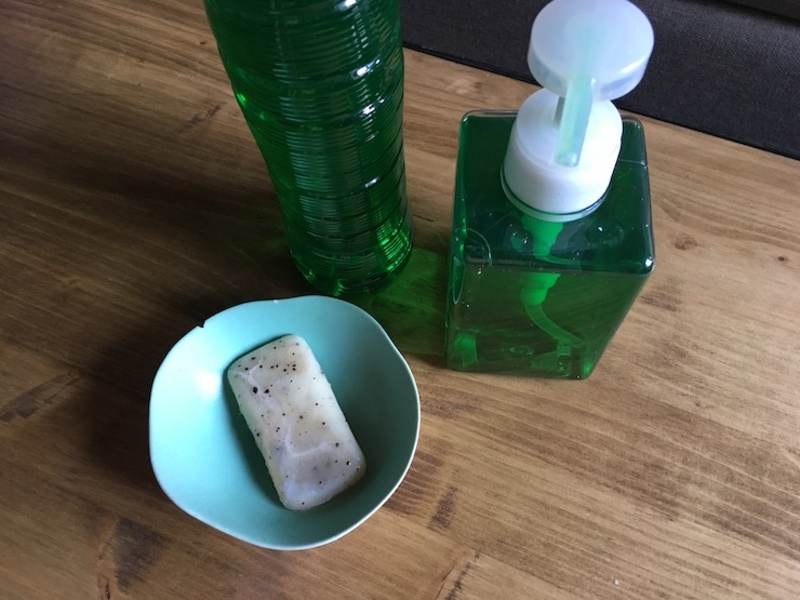
- Switch to a bar hand soap or refill your existing soap dispenser.
- Refill your cleaning products - Look for a zero waste shop in your city! I found this amazing one called BioPompas in Barcelona where you can refill everything from all-purpose cleaning spray to a softener and shampoo. If you're in Barcelona, you can find a zerowaste shop near you using Go Zero Waste App. In the UK, you can order cleaning products that come in reusable bags which you can send back and get refilled. (Who wants to work on this kind of business in Spain?)
- Use metal or glass containers to store food and cover your plates with beeswax wraps or bamboo wraps instead of plastic wrappers.
- Separate your organic waste from the rest and recycle it — In Barcelona there are organic trash bins, but in other cities there might be services similar to ShareWaste where you can donate your organic waste to locals who turn it into soil. I started storing my organic waste in the freezer — It’s less smelly and convenient to take out afterwards!
- Reuse plastic ziplock bags (like these ones from IKEA) — I wash them and use them over and over for snacks and security checks at the airport.
When grocery shopping
All my reusable shopping bags and boxes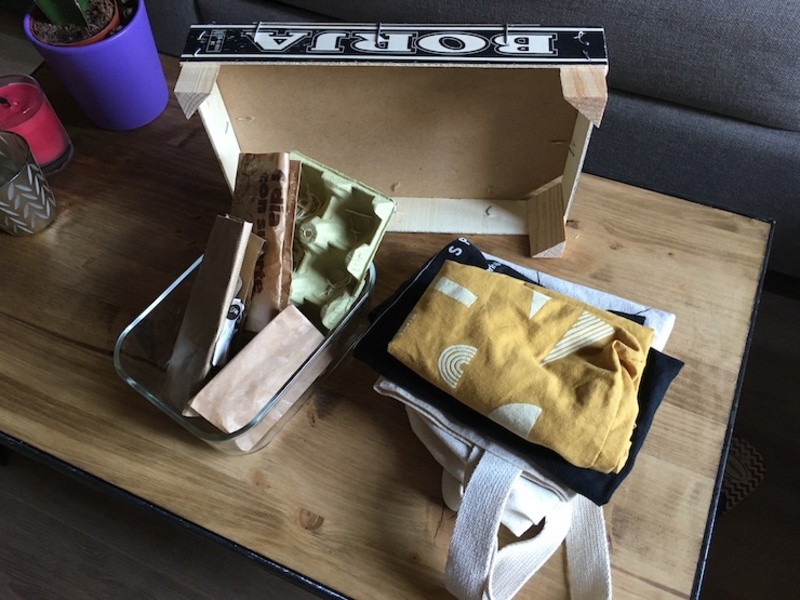
- Always go prepared with reusable bags for different kinds of produce — I usually take a bunch of tote bags and mesh bags for fruits and veggies. I refrain from buying fresh produce in supermarkets, but if I need to do it, I weigh them without bags and place the sticker on one of the fruits.
- Find bulk store in your city to buy all your grains, nuts, honey, almond butter spread and more (including Vermut!). I use YesFuture in Barcelona. During the COVID lockdown, I discovered a lot of zerowaste shops with a delivery service.
- Try to buy bread at the bakery, fruits at the fresh market, meat at the butcher’s… You get it. Supermarket is basically the kingdom of plastics and small shops owners are more flexible to refill your containers.
- If you do go to the supermarket, ask people at the cheese or meat counter not to wrap your order in plastic. Update: Now in some supermarkets in Barcelona, they accept your own containers. It has to be clean and transparent and have a proper lid.
- Avoid already prepared or frozen foods that come in plastic (also for your health’s sake!)
- Refrain from spontaneous shopping — it can cost you extra plastic.
- Stop buying bottled water — invest in a filter for your sink or a portable one such as Ecofiltro. They offer home filters that are also pleasing to the eye. If you must buy a plastic bottle, keep it and use it for something else (like refilling shampoo).
In your bathroom
Some of my plastic-free bathroom products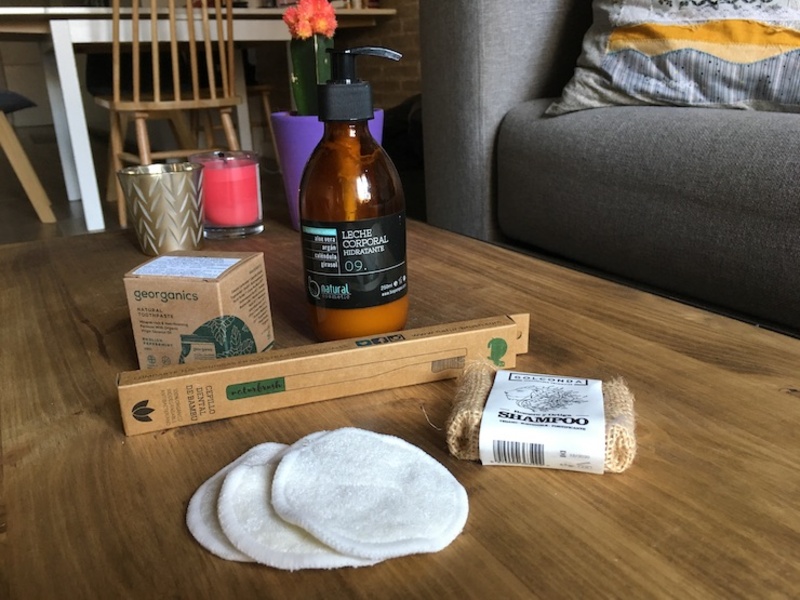
Use bamboo toothbrush and toothpaste in a glass jar (I failed in the latter, see below!)
Update: When it comes to bamboo toothbrush, my dentist told me to stop buying it and invest in an electric toothbrush which leaves your teeth cleaner and more healthy. When it comes to health, I prefer not to compromise.
Switch to a bar shampoo - Brands like Lush, Kriim or others offer it, but it’s always good to find a locally made alternative or refill your liquid one.
Use a bar body soap — I found this lovely organic business, Moonvaley Organics, created by a couple who runs a farm in Deming, WA. It just happens to be selling in an eco shop on my street. Recently I've switched to a more local alternative from La Chinata.
Look for cosmetics that come in glass bottles — I buy my body lotion in Biompompas and discovered Evolut cosmetics which are natural and available in glass containers.
Get reusable cotton pads for makeup removal — I use each several times and then wash them all with my laundry.
Reuse empty containers for other purposes.
Lady products - switch to a menstrual cup, and get reusable or at least organic pads or liners.
Make your own products - like a body scrub.
When (thinking of) buying clothes
An incredible, thought-provoking art installation by Von Wong and Laura François that illustrates the amount of clothing one person owns in their lifetime. Read about it here.
- Firstly, simply shop less and buy only what you need — there was a time in my life when I was a really heavy clothing shopper. I just couldn’t resist $10 tops from Inditex brands and sporting new piece a few times per month (yikes!). So I totally get it. But I think there comes a time when you’re ok with owning less and you choose quality over quantity. Quality for me means not only durable and natural fabrics, but also clothes created sustainably, which leads me to my next point.
- Find ethical fashion brands — I know the pricing doesn’t seem accessible sometimes, but I seriously prefer to get one t-shirt which I know exactly where it came from, rather than a dozen from a fast fashion brand. I still own plenty of fast fashion labels but only because I’ve been wearing them for years (sometimes 15 or more!) and there’s no reason to stop and get rid of them all.
Tamga Designs is hands down my favorite sustainable brand with a 100% transparent supply chain. They make clothes from eco-friendly fabrics like TENCEL and support organizations that repair damage done by the fashion industry to the endangered forests. The lovely co-founder, Yana, talks about conscious fashion and zero waste living on Tamga’s Instagram page.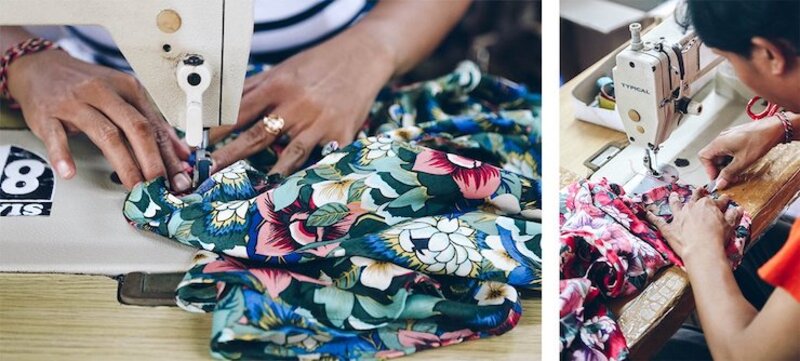
- Thrift shop — visit second hand shops in your city and breathe new life to used clothes. In Barcelona there’s Humana (I donate my clothes there) or Holala! among many others.
- Swap clothes with friends — in my case, at least 40% of my closet is made up of clothes from my sister in law. And I love it!
- Repurpose older clothes — more and more often I look at my old clothes and suddenly have an idea of how to wear them in a completely new way. This year I started wearing many of my summer dresses all year round with a t-shirt underneath and tights.
- When ordering online, ask brands about their packaging and fabrics. Recently I asked a shop assistant about the fabric of a dress I was interested in. She told me: "all organic cotton". Unfortunately, I checked the label afterwards and realized it was rayon. Sometimes it's worth to double check and question.
In your community
- Spread awareness in your circles by sharing your experience, challenges, and small wins.
- Support adoption of policies that aim to ban single use plastic — sign local petitions like the one banning single-use plastic bags in the supermarkets.
- Participate in beach (or park) cleanups in your city or organize one, even if it’s with a friend.
- Join communities like this one or this one in Barcelona that share ideas on how to reduce waste.
- Follow people who have been doing this for a while and are absolute winners in my books. Ethically Kate is one of them for me.
Phew! There you go. This is just a small start, but it is worthwhile.
And to end with, here are the notes from my July (and beyond) wins and fails.
My Personal #plasticfreejuly aftermath
I managed to:
- Stop buying bottled water (such a basic!) and opted for a small filter from Ecofiltro. I love the taste of the water and the amount of plastic it lets me reduce. Previously I used Brita and wasn't happy with the amount of filters I have to buy every month. With Ecofiltro, I need to change the filtration unit in 2 years!
- Start buying more things in bulk in zero waste shops ( kitchen detergents, anti-calc capsules, etc)
- Actively use my reusable water bottle on the go and on holidays
- Clean the beach and water in the sea
- Start buying reusable cotton makeup removers, solid hair products (shampoo, conditioner), and opt for creams and lotions that come in glass jars when possible
- Switch to a bar or refillable soap everywhere in the house
- Start seperating my organic trash (by freezing it!)
- Start buying cheese at the counter where it doesn’t involve a plastic package (I did discover that the paper they pack it in is lined with plastic though. And they just love to add extra layers of it every few slices)
I failed in:
- Being plastic-free while on holidays — I spent half of July away from home and it was much more difficult to refuse plastic or find plastic-free food options on the go in foreign countries (or on an island that had no farmers market!). I did bring my tote and mesh bags with me though!
- I've also realized many Airbnbs don't offer water filters and in places where water is not pleasant or drinkable, there's no choice but buying plastic bottles on the go.
- An occasional take-out — I’m happy to see that my favorite restaurants around Barcelona (like Honest Greens) come in cardboard boxes, but the majority still comes in plastic.
- Refusing some products I cannot get otherwise and I love too damn much (Soy yogurt — I’m looking at you!)
- Using natural toothpaste in a jar or tablets - not foaming texture is one thing I could probably get used to, but the fact it doesn’t give you the freshness you need is not acceptable for me. I shouldn’t want to wash my teeth right after washing them in the first place. I’m still on the lookout for brands, but I’m also conscious about being wasteful.
- Switching my menstrual products — as of now, it doesn't work for me as the first experience was rather traumatic. But I am on the lookout for alternatives.
- Still chewing gum here… but doing it much less than before.
There are probably more failures than that, but I try to focus on celebrating the little wins. It’s only the beginning.
How about you? Have you started to reduce plastic from your life? What’s the most challenging aspect of it for you? Do you have any tips to share?

Marta Olszewska
Co-founder of Refill Aqua striving to reduce single-use plastic waste. Marta is also a marketing consultant and growth mentor helping startups tell better stories through content.